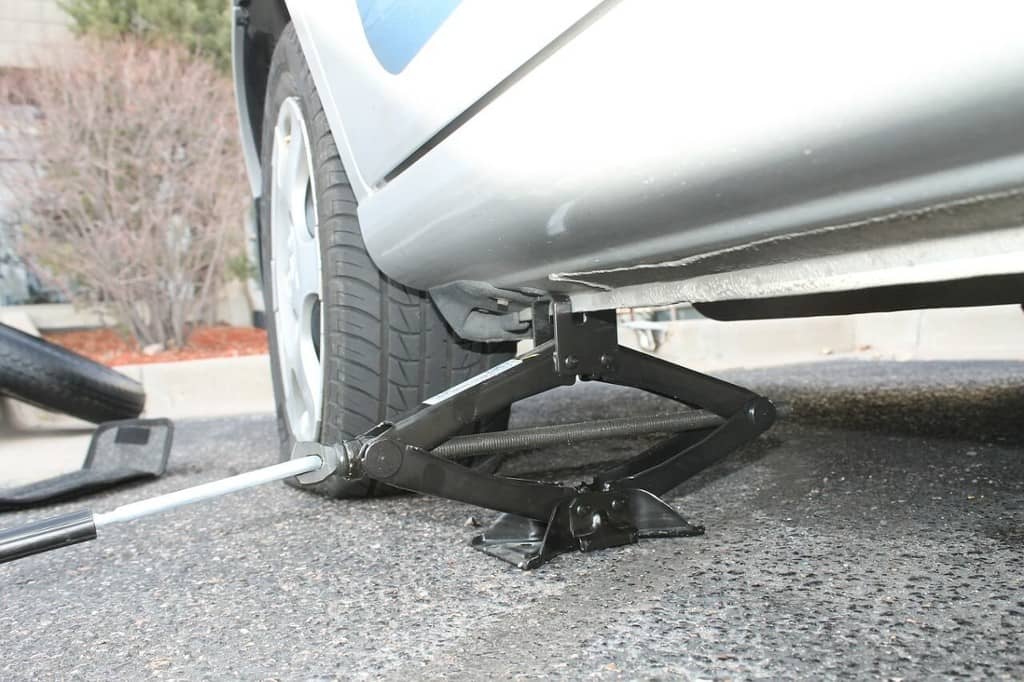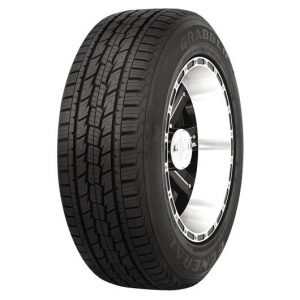
Your tires are the only connection between your car and the road, but as robust as they are, wear and damage are common. Over time, tread wears out, so tires should be replaced before they get to 2/32” tread depth. Going beyond this, the thinner tread can easily be punctured by road debris. Abnormal wear or belt damage can cause part of the tire tread to wear out faster, and could even wear right through the belts. An impact with a pothole or curb could cause a flat tire. Finally, just normal seepage could lead to a flat tire, if you aren’t regularly checking and adjusting tire pressures, but you’re already doing that on a weekly basis, right?
 If you notice you have a flat tire in the driveway or garage, do not attempt to move the vehicle. This could cause tire sidewall damage or wheel damage, increasing your repair costs.
If you’re driving you may notice you have a flat tire because the vehicle starts pulling, you hear that flat-tire “flopping” noise, or the TPMS (tire pressure monitoring system) is sounding the alarm. In this case, do not attempt to brake or turn suddenly, as this could cause a loss of control – the tire is already not giving you any traction. Gently ease off the accelerator and turn on the four-way flashers, or hazard lights. As much as possible, allow the vehicle to slow without using the brakes, and gently steer your vehicle to the side of the road. When you’re ready to get into the breakdown lane, shoulder, or parking lot, gently apply the brakes to bring yourself to a stop.
If you notice you have a flat tire in the driveway or garage, do not attempt to move the vehicle. This could cause tire sidewall damage or wheel damage, increasing your repair costs.
If you’re driving you may notice you have a flat tire because the vehicle starts pulling, you hear that flat-tire “flopping” noise, or the TPMS (tire pressure monitoring system) is sounding the alarm. In this case, do not attempt to brake or turn suddenly, as this could cause a loss of control – the tire is already not giving you any traction. Gently ease off the accelerator and turn on the four-way flashers, or hazard lights. As much as possible, allow the vehicle to slow without using the brakes, and gently steer your vehicle to the side of the road. When you’re ready to get into the breakdown lane, shoulder, or parking lot, gently apply the brakes to bring yourself to a stop.
 Put the transmission in park or reverse (for manual transmissions), set the parking brake, and turn off the engine. If you have wheel chocks, use them to block the wheel opposite the flat tire. For example, if you need to change the left front (driver side front) tire, block the right rear (passenger side rear) wheel.
Put the transmission in park or reverse (for manual transmissions), set the parking brake, and turn off the engine. If you have wheel chocks, use them to block the wheel opposite the flat tire. For example, if you need to change the left front (driver side front) tire, block the right rear (passenger side rear) wheel.